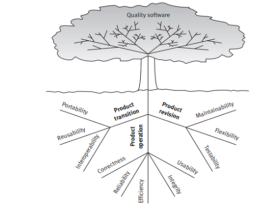Tax debt can feel overwhelming, making it nearly impossible to get back on track. Whether the debt accumulated over time due to unfiled returns, missed payments, or a change in financial circumstances, it’s important to understand that you can regain control. While the journey out of tax debt may seem daunting, there are ways to reduce your liabilities and build a stronger financial future. Below, we will explore the necessary steps to navigate tax relief options, create a sustainable financial plan, and rebuild your credit after clearing tax liabilities.
Navigating Tax Relief Options: From Installment Agreements to Offers in Compromise
When you’re facing tax debt, it’s crucial to understand the range of options available to help resolve your liabilities. One common route is setting up an installment agreement, which allows you to pay the debt over time. These agreements typically require you to make monthly payments, which can be tailored to fit your financial capacity.
Another option for severe financial distress is the Offer in Compromise (OIC), which could reduce your overall tax liability. The IRS reviews your financial situation and, if you qualify, accepts a lower settlement amount to clear the debt. This option benefits individuals with little to no income and cannot repay the full amount.
Tax relief services can also help you navigate these options by providing expertise on which approach is best suited for your unique situation. Many professionals assist with filing for an installment agreement or OIC to ensure all documentation is submitted accurately. They will also handle communications with the IRS, reducing the stress on your part.
It’s important to remember that not everyone qualifies for these programs, especially an Offer in Compromise. The IRS has strict eligibility criteria, often requiring you to demonstrate that paying the full amount would result in significant financial hardship. Being well-informed about your options increases the likelihood of a successful outcome.
Creating a Sustainable Financial Plan Post-Tax Debt
After clearing your tax debt, creating a financial plan that ensures you stay on solid ground is vital. First, evaluate your income, expenses, and financial goals to determine the necessary steps to rebuild your finances. Start by prioritizing any remaining debts, saving for emergencies, and avoiding new liabilities.
A crucial part of your post-tax debt journey is developing a realistic budget. It’s essential to keep track of your spending and adjust your habits to accommodate new financial goals. Allocating funds towards savings and necessary living expenses while avoiding unnecessary purchases will help prevent future financial stress.
A well-crafted financial plan should also include building an emergency fund to cover unexpected costs. Life can throw curveballs, so having a safety net ensures you won’t be caught off guard by sudden expenses. Many find that keeping three to six months’ worth of living expenses in reserve provides adequate peace of mind.
Finally, to ensure long-term financial success, you should continue to educate yourself about money management. Reading personal finance books, attending workshops, or seeking advice from financial experts will help you stay on track. Pharmacy leadership roles, for instance, often require the ability to make informed financial decisions, a skill that can benefit anyone striving for financial stability.
Rebuilding Credit and Financial Health After Clearing Tax Liabilities
Once your tax debt is resolved, the next crucial step is rebuilding your credit score, which may have been negatively affected during the process. Start by checking your credit report for errors, as discrepancies can lower your score. Disputing incorrect information is the first step toward restoring your credit health.
Paying off any remaining debts promptly is another way to boost your credit. Consistently making on-time payments shows lenders you are reliable, which can gradually increase your credit score. To demonstrate responsible credit usage, prioritize high-interest debts, and maintain low credit card balances.
In addition to addressing existing debts, applying for a secured credit card is wise if your score is still low. Secured cards require a deposit as collateral, but they can help rebuild your credit over time. This tool is effective for individuals who have faced significant credit challenges.
Lastly, monitor your overall financial health by regularly reviewing your credit and making necessary adjustments. Staying committed to your financial plan and credit restoration efforts will ensure you don’t fall back into tax debt or poor financial habits. Remember that consistent effort and discipline are key to long-term success.
Overall, climbing out of tax debt requires careful planning, discipline, and a commitment to improving your financial habits. By taking proactive steps to resolve liabilities, create a sustainable financial plan, and rebuild your credit, you can confidently begin a new chapter on solid financial ground.




